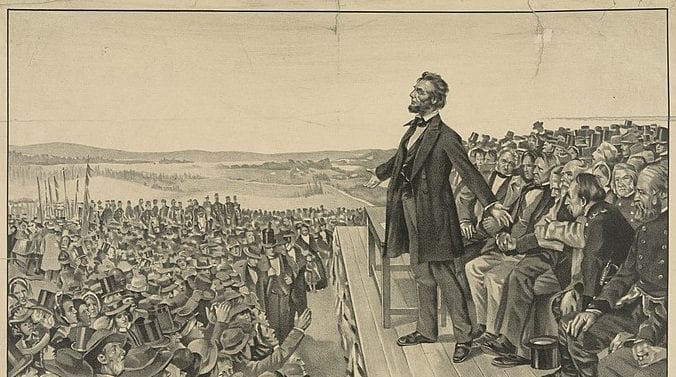Vol. 127, November 19th, 2024 Published a day early online
Stars Fell on Rustburg?
On November 13th, 1833 the sky fell. Stars rained down from the heavens. Terrified Americans dropped to their knees in prayer. Gamblers threw their cards in the fire, winos ditched the bottle, and cries of repentance filled the land.
Then, the day broke. The world was still there. The Leonid meteors, burning dust from comet Tempel-Tuttle, had put on a fierce show, often repeated in 33 year cycles. But that 1833 storm was so vivid (and traumatic in its mystery) , that writer Carl Carmer, a century later, found women in Alabama who told him family legends about the event.
He published a book of essays in 1934 titled Stars Fell on Alabama. Songwriters Parish and Perkins got hold of the idea, and the jazz standard was born. It’s a happy tune, of kissing while the stars blaze across the sky, but like many ideas, sounds better on paper.
A few years later, poor Ann Hodges had an unlucky day with stars falling in Alabama. While taking a snooze on her couch, a meteorite smashed through the roof, hit the radio–then her. She escaped with a doozy of a bruise.
The Leonid meteors were supposed to peak last night, so I got up for a look, and–didn’t see a single one. On the bright side, I didn’t get hit with a space rock. Whew!
Do Chickens Like Coffee?
I’ve “hatched” a plan to increase productivity in the coop. Let’s see...
Text of the Week
Gettysburg Address
Delivered today, November 19th, 1863, this iconic speech was only 272 words long, and deserves a regular re-reading.
Four score and seven years ago our fathers brought forth on this continent, a new nation, conceived in Liberty, and dedicated to the proposition that all men are created equal.
Now we are engaged in a great civil war, testing whether that nation, or any nation so conceived and so dedicated, can long endure. We are met on a great battle-field of that war. We have come to dedicate a portion of that field, as a final resting place for those who here gave their lives that that nation might live. It is altogether fitting and proper that we should do this.
But, in a larger sense, we can not dedicate -- we can not consecrate -- we can not hallow -- this ground. The brave men, living and dead, who struggled here, have consecrated it, far above our poor power to add or detract. The world will little note, nor long remember what we say here, but it can never forget what they did here. It is for us the living, rather, to be dedicated here to the unfinished work which they who fought here have thus far so nobly advanced. It is rather for us to be here dedicated to the great task remaining before us -- that from these honored dead we take increased devotion to that cause for which they gave the last full measure of devotion -- that we here highly resolve that these dead shall not have died in vain -- that this nation, under God, shall have a new birth of freedom -- and that government of the people, by the people, for the people, shall not perish from the earth.
Abraham Lincoln
November 19, 1863
New Cape Cod
The Mayflower reaches Cape Cod today, 1620 . Patti Page would have to wait 337 years to record the “old” version.
Carol’s Appalachian Word of the Week
Coal oil (Kerosene). “Run to the gas station and fill up the can with coal oil.”
Quote of the Week
“Light is the symbol of Truth.”
–J.R. Lowell
Write to Us!
The Nighthawk is a new old-fashioned way to connect, published weekly. You’re invited to write back, or just enjoy reading. Let’s have some fun! It’s a social paper! Send stories, etc to: PO Box 783, Rustburg, VA 24588 or joshurban@protonmail.com
Letters from Josh
(A weekly update from Josh Urban’s adventures on the farm and in the city. #212)
Appearing in the Altavista Journal, etc: The Evening Star
Howdy, folks, and welcome back to the show! Don’t you think the evening star has a nice ring to it? It used to be a Washington newspaper in the 1800’s. It’s the name of an Edgar Allan Poe poem, and before you throw this paper away with a “what is that boy talking about?”, it’s that airplane looking thing in the west at sunset. The planet Venus, that is.
Now, it’s the Evening Star. It’ll be the Morning Star in the spring as it travels around the Sun, wandering across the sky. The word planet is from the Greeks, meaning “wanderer.” The orbits must have messed with the guys trying to make precise star charts. Watch Venus yourself, comparing it to the background stars over a few weeks, and imagine the frustration. “Hey Achilles, I think I finished the chart...oh wait.”
For the casual sky-watcher, though, it’s a lovely sight. It’s the brightest planet in the sky, and is putting on a fine display shortly after dark. Burning with a steady, silvery light, it’s easy to mistake for an airplane (or a UFO, depending on who you ask–I’ve got eclectic friends).
Long before Bananarama recorded that killer track in 1986, people sang, wrote, and marveled at Venus in the night sky. They named it after the Roman goddess of love. Like many celebrities and false idols, Venus looks nicer than it acts. You wouldn’t want to stop by for coffee and a pep talk. While often called “Earth’s Twin” with a similar size, thick clouds of sulfuric acid trap the Sun’s heat, raising the surface temperature to over 700 degrees.
Visiting would have perks, though. You could cook a frozen pizza by holding it in the air for a mere sixteen seconds. If Amtrak ran interplanetary trains, maybe they wouldn’t have to microwave their dining car pizza when on Venus. Yuck. But I digress.
Since the planet rotates backwards on its axis, the Sun rises in the west and sets in the east. This happens slowly. A day is long–about 243 Earth days, but completes one orbit of the Sun every 225 Earth days, making a Venusian year shorter than its day. It rains sulfuric acid, or tries to. Ambient temperature is so hot, the acid rain evaporates before reaching the surface. The craters are named after famous women, though, so that fixes it. It sounds a lot like California. (Minus the crime.)
Fans of Jimi Hendrix will remember that we live on the “third stone from the Sun.” Venus is the second, between us and the Sun, which is important for our story. In 1761, astronomers used a transit of Venus–when the planet moves in front of the Sun–to accurately measure our distance to the Sun. They also used math. I’m still getting my head around it, so ask Google instead of me, but suffice to say, those guys were pretty smart. They built humanity a yardstick to measure the cosmos. It’s called an Astronomical Unit, or AU for short.
So go outside, and take a look at the western sky just after sunset. Ain’t she purdy? Crank the Bananarama while you’re at it.
“Yeah baby she’s got it.”
Catch you on the flip side,
Josh






Prefer the Shocking Blue version.